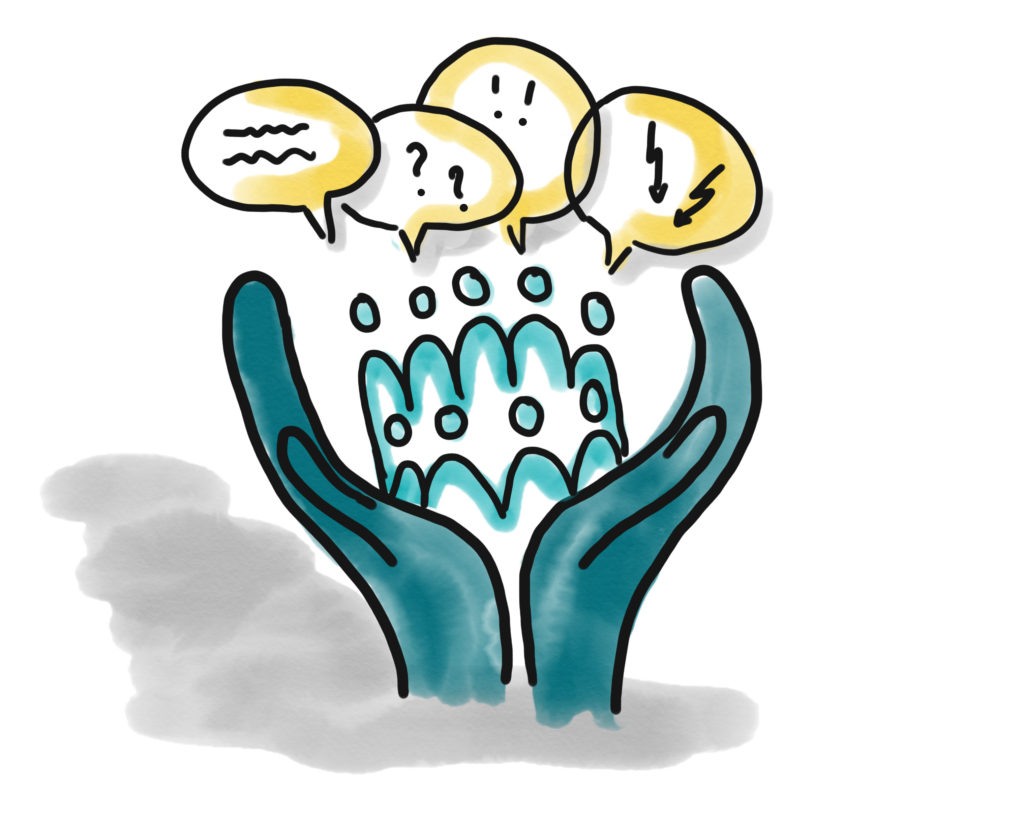A Hamburg-based provider of integrative childcare is embarking on an experiment: they have their team day moderated by the consensus pilots in order to improve trust in the team.
The institution is in the middle of a restructuring, in which, among other things, the usual informal participation processes are to be replaced by uniform processes and regulations. Some employees fear for the quality of the individual pedagogical work. Can a new participation method help them? Fellow coach Nayoma de Haen accompanied and observed this day.
How it started
At the beginning, the mood in the circle seems restrained to depressed. In the run-up to the event, there have been many accusations and heated discussions. Will there be a big bang today? In the introductory round, frustration and fear are palpable, but also hope, and above all a great need to talk. The institution has grown rapidly in recent years, and the informal participation structures that have been ingrained for years need an update. Restructuring has been set in motion and there is uncertainty about what this will mean for the individual employees. The 15 participants, mainly employees of the kindergarten and two women from the board of the sponsor, came together to be supported in their cooperation for a day with Systemic Consensus. Systemic consensus is a procedure from Austria that maximizes the sustainability of decisions in groups by constructively integrating resistance to decisions and gaining synergy effects from diversity. This day will be moderated by Adela Hurtado Mahling and Markus Castro, two Trainer_innen for Nonviolent Communication and Systemic Consensus, who have been intensively contributing to the dissemination of this approach in Germany for several years.
It begins with an initial survey of the resistance to the key question for the day, which had been discussed in advance with the management: "What agreements do we make to promote trusting cooperation?" The generality of the question causes irritation for some, but it turns out that everyone can get involved. In the course of the day, it becomes clear how much this openness opens up creative scope for the question.
In the next step, collecting the wishes for good solutions, many worries and concerns are expressed again. The two Moderator_innen support the participants in working out the underlying needs and concerns, and a few central topics emerge: many employees want more transparency, clarity and more open communication. They want to be more involved and would like to have concrete relief in their everyday work.
From problem orientation to co-creation
After the lunch break, displeasure is once again expressed as to why the facts of the restructuring process are not being discussed here today. It is so unusual to focus on a solution-oriented question instead of discussing the problems. The invitation to now work together on proposals is also accepted only hesitantly at first. But when it becomes clear that here and now there is an opportunity to help shape the future, the mood changes. Where there was previously mistrust, an intensive constructive discussion develops instead and everyone is eager to develop solutions for better process structures. From then on, the short time is actually the only problem.
Four topics quickly emerge, on which small groups sit down and develop proposals. These are agreed upon by the entire group, i.e. tested for resistance. In several "speed dating" rounds, the participants exchange ideas about the background to their objections in small groups and one-on-one discussions. In addition to the focus on resistance, this is another crucial step that distinguishes systemic consensus from other decision-making processes. If you want to promote your own proposal, you will no longer benefit from rejecting the other proposals. It now makes more sense to talk to the apparent opponents and explore how a proposal can be modified or supplemented in such a way that it meets with less resistance. Most of the time this is possible and by the way, apparent opponents have come closer to each other and now have more understanding and goodwill for the concerns of the others.
"At first I thought it was going to really crack here today"
In a further step, the information collected will be incorporated into new proposals for action and presented again. Since the afternoon is already quite advanced, the two Moderator_innen only show the further procedure on the basis of the proposal for a new structure of the monthly team conferences: The implementation is accepted by consensus by the group with 0 resistances, i.e. the proposal is a done deal. The group itself seems surprised at how quickly it came to a constructive cooperation. Of course, there is still a lot to be clarified and it may also take space and time to appreciate fears and injuries. In the final feedback, however, it becomes clear how much the mood has changed. "At first I thought it would really crack here today," says an employee, "I'm very happy and relieved that it was so constructive!" "The day leaves me with the feeling and confidence that through external support, supposedly muddled situations and structures can be brought back on track," says another. Other voices were: "The fears have not disappeared, but the approach fits better than what we did before." "The trial takes time, but despite the emotional involvement, it was very calm." "The simple number system[1] is great because otherwise it is so difficult for us to make decisions." "Before, I had the feeling that we had a lot of walls between us; the reversal of the question has resolved this."
Text: Nayoma de Haen and Adela Hurtado Mahling

